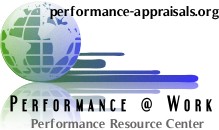Using The Performance Appraisal To Drive Return On Investment In Training and Learning
Training, Development, and Succession Planning - The Link To Performance Reviews
How do you decide how to allocate money and resources to the training and development of your staff? In many companies, decisions about training and development are made without any rational rhyme or reason. Sometimes, training is arranged when there is a budget surplus you need to get rid of. Other times, employees make a request when they see a need and the request is approved or rejected based on very fuzzy criteria.
When there’s no way of determining what training is needed and who should receive it, training budgets end up wasted. Like performance reviews, the purpose of training and developing employees is so they can increase their contributions to the company. Without some sort of links to the company’s goals, the work unit’s goals, and the performance levels and job tasks of employees, you’re wasting money.
Without some sort of links to the company’s goals, the work unit’s goals, and the performance levels and job tasks of employees, you’re wasting money.
How should you decide on allocating training and development resources? By using the information and analyses you create with each employee during the review meetings to determine how best to improve performance. The results of the reviews drive the decision making process. Once you’ve identified barriers to performance or opportunities to improve performance and you understand why they exist, you investigate whether the causes of the barriers could be remedied through training and development. If so, then you allocate resources. If, however, the true causes of the performance deficit cannot be addressed through training, then you don’t allocate resources to it.
